What are the charms of the downtown (old streets) in Tokyo, Japan? Reasons why everyone loves to visit
Most peoples first impression of Tokyo is a bustling metropolis, with its innovative modern architecture, ever-changing fashion trends, and endless new topics of interest. However, there are also many old streets in various parts of Tokyo that exude a simple and peaceful way of life, known in Japanese as shitamachi. In recent years, some of these old street areas have not declined with the changing times, but have instead risen in popularity, attracting not only Japanese people but also becoming a popular destination for tourists from various countries. What are the distinctive features of these old streets (shitamachi)? What are the charming aspects that make people want to linger and visit again? Please read on for the following introduction.
What are the areas of the old streets (Shitamachi) in Tokyo?
](http://5b0988e595225.cdn.sohucs.com/images/20191021/567446f726e84a8e84468f537b20ef4b.jpeg)
The term shitamachi in Tokyo originates from the Edo period, when the hilly plateau areas were divided into the yamanote (roughly equivalent to the upper city area in Chinese), mainly inhabited by the shogun, various high-ranking officials, and large temples, etc., while the surrounding areas were inhabited by lower-ranking samurai and others. Most commoners lived in the lower-lying areas, known as shitamachi (referred to as old streets in Chinese). Representative shitamachi (old street) areas within the 23 wards of Tokyo include Nihonbashi, Kyobashi, Kanda, Shitaya, Asakusa, Honjo, Fukagawa, etc. In addition, there are also places outside the 23 wards of Tokyo, such as Shibamata in Katsushika Ward, and the coastal areas of Ota Ward and Shinagawa Ward, known as shitamachi (old street). Nowadays, the Yanaka area, full of the atmosphere of common peoples lives and many nostalgic old-fashioned scenes, is also considered shitamachi (old street).
Here are 10 reasons that will make you fall in love with Tokyos old street area

Reason 1 Slow pace, simple life atmosphere

Leaving the bustling city center and entering a slow-paced old street with a strong sense of local life will unconsciously slow down ones pace. Walking in the same rhythm as the locals through the old streets and alleys can release the accumulated stress and pressure for travelers, allowing their hearts to settle and discover unseen scenery, observe the vivid and simple daily life of the locals, and be infected by the tranquil life atmosphere of the old street. Many people can also relive the pure and beautiful feelings of early Chinese society.
Reason 2 The most beautiful scenery, the old street full of human touch.

Visitors to the old streets are sure to be deeply impressed by the warmth and hospitality of the local shopkeepers and residents! Many old street areas have preserved the simple and genuine neighborhood atmosphere of the early days, and the friendly and hospitable shop owners always warm countless hearts with their welcoming smiles. Everywhere, one can feel the warm and sincere human touch of the locals. The faint cries of vendors, the laughter and chatter between shopkeepers and customers, or the conversations among neighbors… all of these reduce the sense of indifference found in the city, allowing people to feel relaxed and at ease. This leaves a wonderful impression of the old streets on many people, making them willing to revisit the old streets next time.
Reason 3 relatively inexpensive prices, a great place for locals to shop for daily necessities and goods.
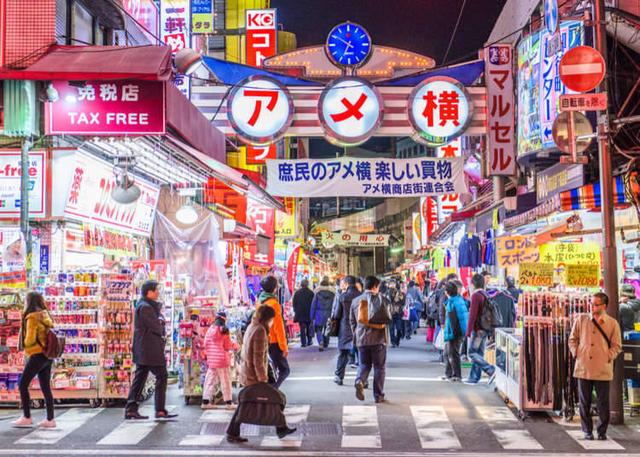
The old street area is cheaper than other areas in Tokyo, so the shops and stores around the old street area offer more affordable products and food. The popular Ameyoko in Ueno not only sells fresh and cheap local produce, but also a wide variety of goods such as cosmetics and daily necessities at economical prices, making it irresistible for shopping. Many old streets such as Asakusa, Ameyoko in Ueno, Yanaka, Koenji, Tsukishima, etc., are surrounded by numerous inexpensive and delicious eateries and restaurants, all of which are very popular! Moreover, you can also find many cheap and delicious snacks on the old streets and shopping streets. If you want to plan a budget-friendly shopping or food trip, you must visit the old streets!
Reason 4 Many authentic traditional delicacies hidden in the alleys of the old streets

The old street is also one of the important birthplaces of Tokyo cuisine. When you visit the old street, you can find many delicious snacks and dishes that represent the flavor of the downtown area. There are countless small shops that have been in business for decades and old shops that have been passed down for generations and have a history of hundreds of years. The characteristic of these local popular foods is that they are inexpensive, make good use of local ingredients, and offer a taste of local home cooking that is not easily found in other regions. Therefore, they are deeply loved by the locals. Many shops and canteens have long lines of customers waiting outside before they even open, and on holidays, they attract food enthusiasts from all over. Each one is a hidden gem, and each one is delicious!

The old street of Yanaka is not just Harajuku for grandmas, its also a treasure trove of delicious food! Starting from the Yanaka subway station, there are over 50 restaurants and snack stalls along the way, offering traditional snacks, fruits, affordable Japanese home-cooked dishes loved by both elders and children, and even Michelin-starred delicacies. The beef croquettes on the Yanaka Ginza shopping street always whet the appetites of countless people. There are numerous century-old delicious eel rice dishes on the Asakusa old street. Dont miss the famous Kusa Dango on the Shibamata old street. The Edo traditional local cuisine Fukagawa-don in Kiyosumi-Shirakawa is loaded with clams. There are over 50 shops on Tsukishima Monja Street… and many more restaurants and countless hidden gourmet delights waiting for foodies to taste!
Reason 5 Temples with a history of over a hundred years, and architectural relics that embody the beauty of the fusion of Eastern and Western cultures.
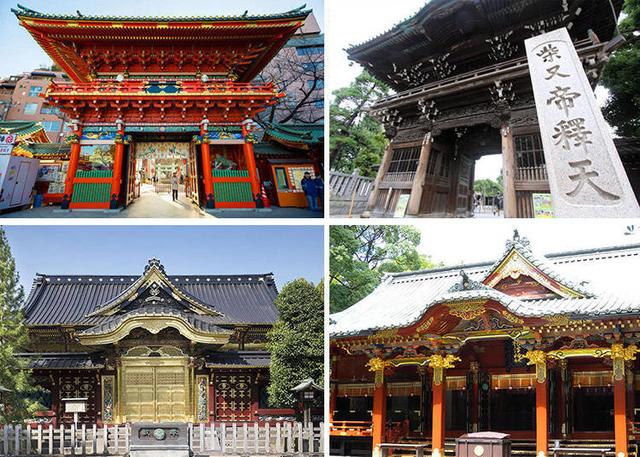
The old streets of Tokyo and the early street markets in China are very similar. In the center of the old streets, there is almost always a temple or shrine, which serves as the center of local peoples lives and beliefs, gradually developing into thriving commercial areas. These areas all have a history of prosperity, and across the country, you can see the magnificent beauty of shrines and temples with a history of hundreds of years and splendid architectural craftsmanship. For example, in the Edo period, Asakusa Kannon Temple was the commercial center and the birthplace of popular culture and entertainment in the Asakusa district. The prominent red lanterns with the characters Kaminarimon at the Asakusa Kannon Temple are definitely the most famous impression of Tokyo and one of the must-visit landmarks for tourists visiting Tokyo. The Taishakuten on the old streets of Shibamata is a completely wooden structure with a solemn and magnificent craftsmanship that will definitely make you admire it. The Ueno Toshogu Shrine enshrines three generations of shoguns from the Edo period, and its magnificent golden exterior is truly dazzling, perfectly showcasing the style and grandeur of several generations of shoguns.
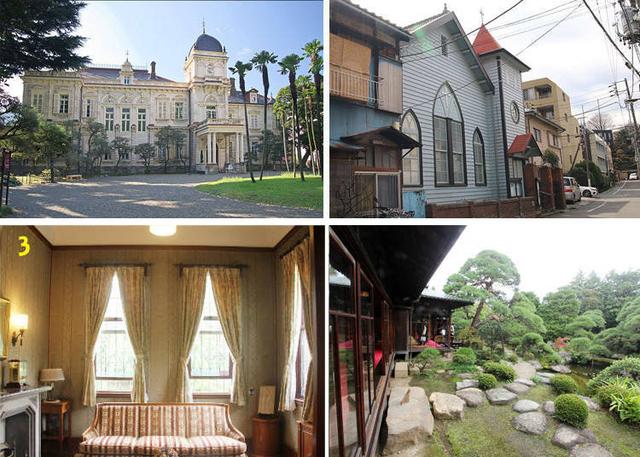
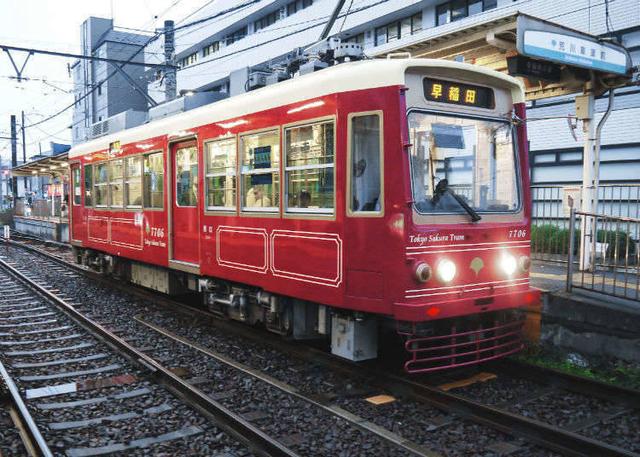
Since the Meiji Restoration and the Westernization movement, through the Taisho and Showa eras to the present day, Japan has continuously embraced Western culture and new ways of thinking. Many old neighborhoods have gradually seen the emergence of a Japanese-Western Eclectic architectural style, blending elements of Western romanticism with Japanese gardens or interior structures, adding to the beauty of the old streets. For example, the Former Iwasaki Residence Garden in Taito Ward, near Ueno, is one of the national important cultural properties that preserves Western-style architecture from the Meiji era as well as traditional Japanese room layouts. In the tranquil residential area of Yanaka, there is also the Nezu Church, built in the Taisho era, with its sky-blue exterior and distinctive Western architectural features, making it a must-see attraction. Strolling through the old streets and alleys, you may even encounter the nostalgic Toden Arakawa Line tram still ringing its bell as it slowly passes by, weaving through the crisscrossing old streets. These historical buildings and cultural relics that blend Eastern and Western influences, old and new, fill these old neighborhoods with stories.
Reason 6 The gathering place for timeless literary masterpieces and literary giants
The Shitamachi area of Tokyo is rich in diverse folk culture and a strong sense of community life, providing abundant sources of inspiration for many literary masters, including writers, poets, and artists. It is an active source of material and the birthplace of many influential modern literary and artistic works that have been passed down through the ages. The most famous literary giants of the Meiji era, such as Natsume Soseki and Ogai Mori, the renowned Japanese novelist Koizumi Yakumo, the first Japanese to win the Nobel Prize in Literature, Yasunari Kawabata, and the representative painter of the Taisho Romantic era, Takehisa Yumeji, all have strong connections to the Shitamachi area. Their birthplaces, educational institutions, workplaces, scenes for creative inspiration, former residences, final resting places, and many other traces of their lives are closely intertwined with this area. Many well-known old shops are famous for being visited by these literary masters from afar. The Ogai Memorial Hall for Ogai Mori and the Takehisa Yumeji Museum are also located in the Yanaka area. Therefore, those who appreciate Japanese art and literature should not miss the opportunity to take a deep dive into this history.
Reason 7 New stores are constantly opening, coexisting with old shops, creating a diverse and eclectic mix of old and new styles
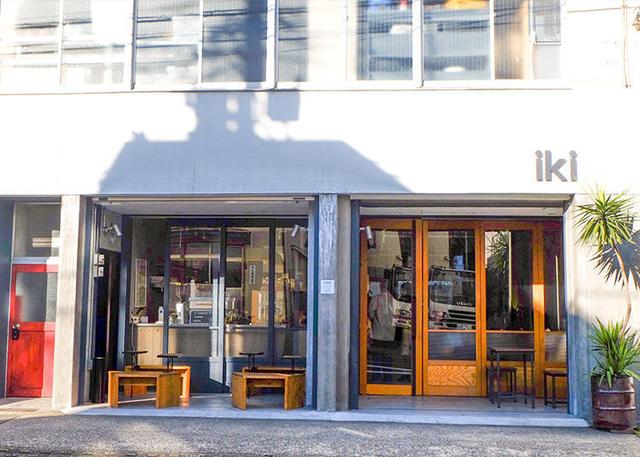

In recent years, new shops and corporate brands have continued to emerge in the nostalgic old streets, with both domestic and international renowned brands setting up shop. For example, the tranquil old streets of Kiyosumi-Shirakawa are home to the first Blue Bottle Coffee shop in Japan, as well as several unique artisan coffee shops, transforming Kiyosumi-Shirakawa into a trendy coffee district. Young people who grew up in the old downtown streets have returned to their familiar and nostalgic land to pursue their dreams, establishing various lifestyle-oriented shops such as artisan craft stores, lifestyle goods shops, restaurants, cafes, stationery stores, and youth hostels. These businesses and brands have adapted to the local environment, transforming old houses, warehouses, or public baths into new spaces filled with design and cultural creativity. Through media exposure, the old streets have become a hot topic among young people, attracting a continuous stream of visitors and injecting new vitality into the area. This has also led to an increasing number of foreign tourists including the old streets in their Tokyo travel itineraries, personally experiencing the nostalgic yet fashionable charm.
Reason 8 You can buy unique items crafted by Japanese artisans.
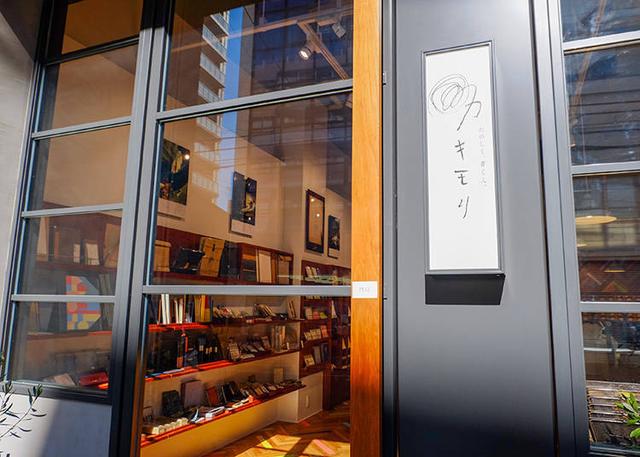
In China and Japan, the popular Japanese dramas Shitamachi Rocket and Rikuoh have deeply impressed and moved viewers with their delicate portrayal of Japanese craftsmen. The former depicts a small factory in Shitamachi striving for excellence in producing rocket parts, overcoming multiple crises of bankruptcy, and ultimately achieving success with superb craftsmanship. The latter tells an inspiring story of a traditional tabi (Japanese socks) shop, which has upheld its craft for generations and is now seeking transformation in the face of the life-or-death situation of an old business. Both dramas depict efforts in their respective industries, but they share the same passion for their professions, dedication to their products, and commitment to quality – this is the spirit of craftsmen! The shops upholding legacy brands not only preserve professional skills but also pursue innovation, attracting many young generations of new craftsmen. Recently, the most famous is Kuramae, known as the street of emerging craftsmen, which is highly popular among young people.

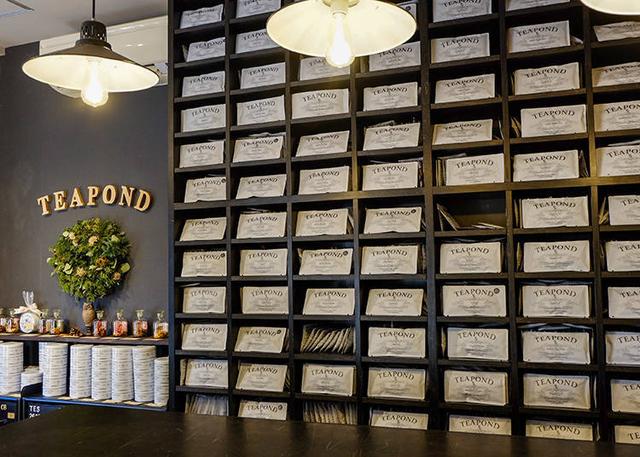
Many skilled artisans and craftsmen have set up shops and studios in the hidden alleys of old neighborhoods, offering a wide range of products such as metalwork, pottery, iron and tinware, woodworking, textiles, leather goods, accessories, writing instruments, as well as tea, coffee, chocolate, and various delicacies. These artisans may not be well-known brands, and may not be widely recognized by the public, but the products they create are of excellent craftsmanship, meticulously designed, unique, and highly personalized. They captivate many people, making them a tasteful choice for collecting, personal use, or gifting. Some shop owners even openly offer handicraft classes or workshops, allowing interested individuals to interact and experience the craft together!
Reason 9 A Cat Lovers Haven for Finding Cats
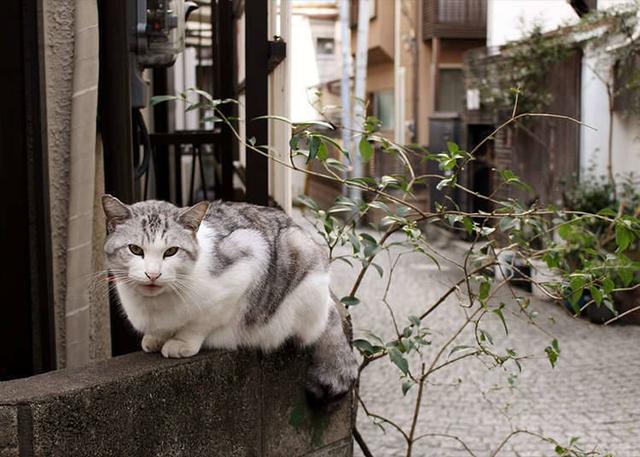
Visiting the nostalgic old streets and searching for traces of cats has become one of the favorite activities for cat lovers! When strolling along the old streets, you may come across cats from time to time. Sometimes, they are perched high on the walls, observing the passersby; other times, they are lazily basking in the warm afternoon sun. And occasionally, you might encounter a cat leisurely strolling along the streets, blending in with the pedestrians.
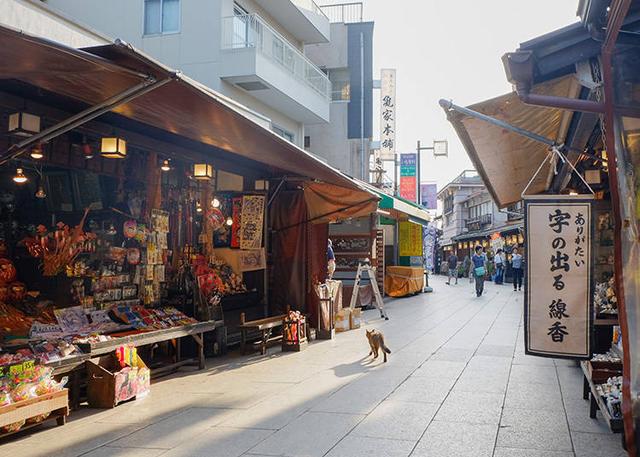
Some shop owners also keep adorable shop cats, which have become a signature attraction for attracting customers, such as the famous cat street in the Yanaka Ginza shopping street. Here, the rate of capturing cat footprints is quite high. Many shop signs on the street are in the image of cats, and there are also many shops selling cat-shaped products or desserts in the shape of beckoning cats… etc. In addition to looking for the figure of cats while strolling through the old streets, you might as well look up and admire the carefully designed signs or cute and interesting cat dolls on the eaves!
Reason 10 Festivals and old street markets brimming with a joyful atmosphere.
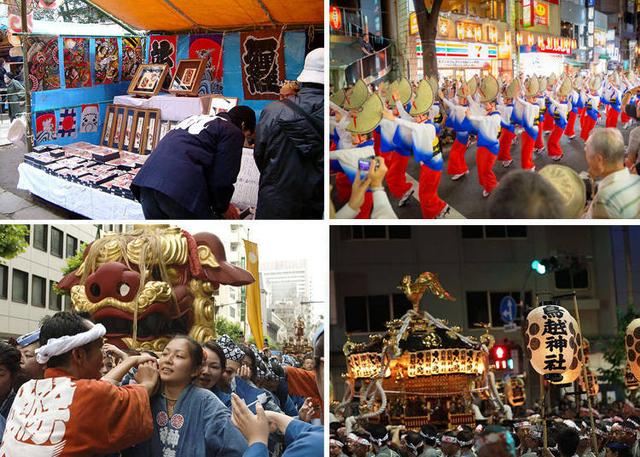
The old streets of Tokyo have always been a stronghold for the common people to live and work, preserving traditional culture and festive activities from the Edo period. For example, every April during the warm spring season, the Yoshiwara Sakura Festival is held on the old streets outside the Asakusa Temple, reenacting the grand procession of courtesans from the Edo period. In May, one of the three major festivals in Edo, the Asakusa Sanja Festival, starts at the Asakusa Shrine, where numerous portable shrines gather, and people compete to carry them through the old streets and alleys, creating a lively celebration. During the peak of the festival season in July and August, many old neighborhoods and shopping streets hold various festivals, such as the famous Koenji Awa Odori Festival, Tanabata festivals, Bon dances, and cooling-off festivals. In addition to traditional ritual performances, visitors can also enjoy delicious food, snacks, and promotional activities, experiencing a festive atmosphere that is absent in the bustling city.

Many old streets in Tokyo regularly host cultural and flea markets, such as the Setagaya Old Street Market, which only opens at the end of the year and is one of the grand and century-old markets in Tokyo. Each time, whether its a festival or a market event, it always attracts tens of thousands or even millions of tourists from both domestic and international locations, coming together to experience the colorful festive atmosphere. Its definitely worth visiting during the festival season!
A popular walking area in Tokyo for locals and foreign tourists alike is the downtown (old street) area.
These old streets carry the rich cultural and historical heritage of hundreds of years, including shrine festivals, seasonal customs, timeless architectural and literary works, exquisite handicrafts created by local artisans with a strong sense of craftsmanship, a warm and orderly yet relaxed lifestyle, and countless local and affordable culinary delights. Its a treasure trove for foodies and a budget-friendly shopping destination. Every visit leaves a lasting impression, making you plan your next trip! If you havent experienced the charming allure of the old streets, I highly recommend spending half a day or a day wandering through them to discover a different side of Tokyo, experiencing the most authentic local life, and creating unforgettable memories that will linger long after your journey.